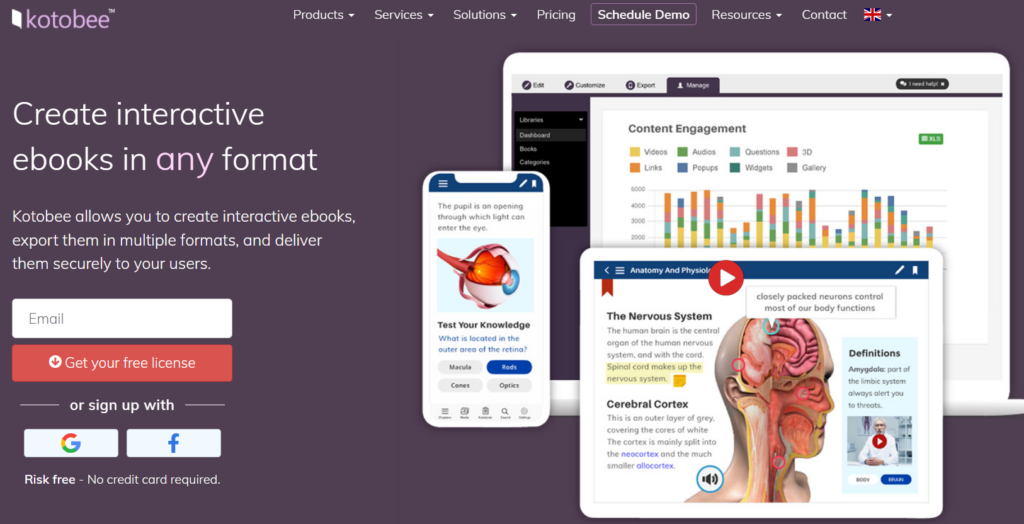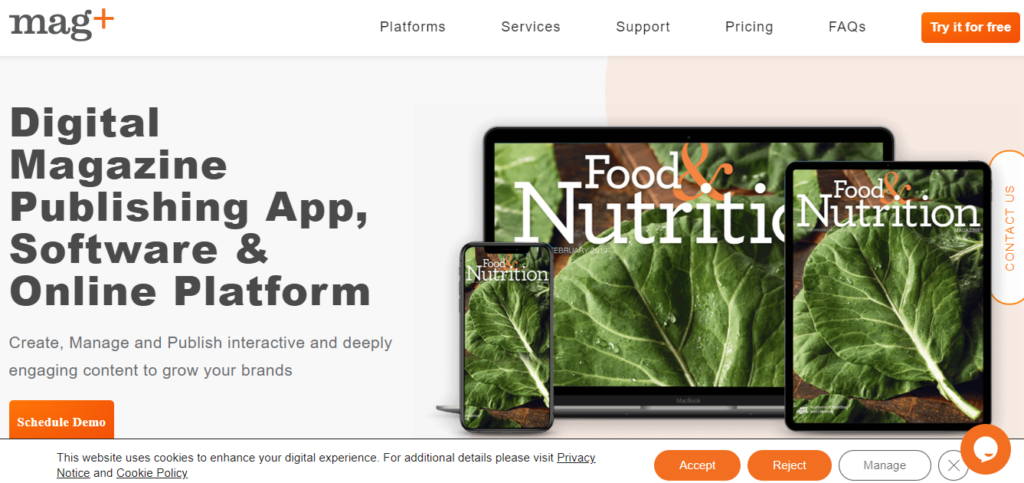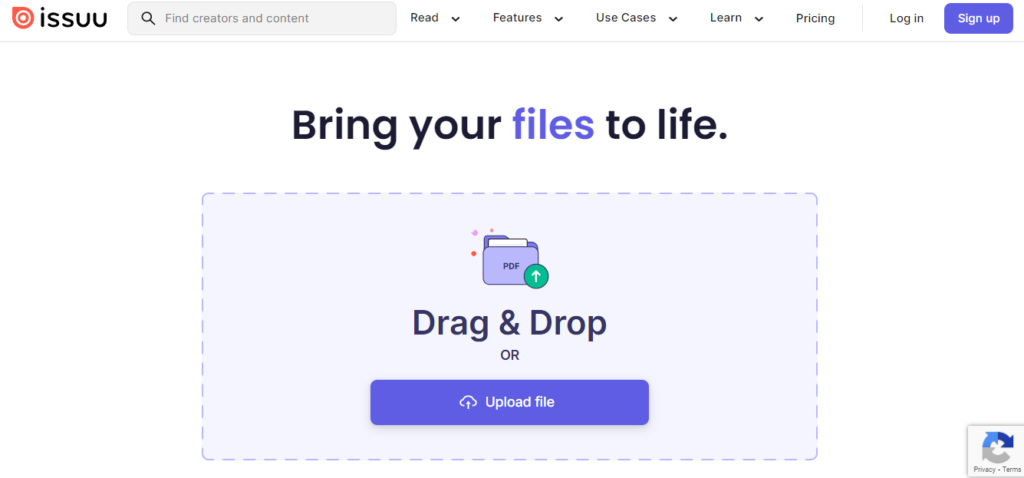Digital platforms have transformed how creators share content, making it easier than ever to reach a global audience. Unlike traditional print methods, a digital publishing platform offers tools to create content seamlessly across all digital channels, catering to readers’ demand for instant access.
From Kotobee to more comprehensive platforms, these tools allow users to create digital content that can be easily distributed, sold, and updated, enhancing digital sales potential. A platform for digital publishing also offers flexibility, helping creators reach readers on various devices while providing a consistent and engaging digital experience.
With easy-to-use digital publishing platforms, users can enjoy a streamlined publishing experience, leveraging features that combine the best of print and digital to connect with audiences more effectively.
Dive in to explore how these platforms reshape the content publishing landscape and discover the ideal digital experience platform to bring your ideas to life.
What Are Digital Publishing Platforms?
First things first, what exactly are digital publishing platforms? Simply put, these online publishing platforms allow creators to develop and disseminate digital content, including digital publications like ebooks, digital magazines, and more. Digital publishing platforms are the key to unlocking a wider audience and more interactive content.
Why Choose A Digital Publishing Platform?
Whether you’re a business or an independent writer, a digital publishing platform can help you engage with your audience on a new level. These platforms often include digital publishing tools such as drag-and-drop editors, interactive elements, and other design features that allow you to create dynamic and engaging content. They can be a real game-changer in the way you deliver your content.
What Are the Best Digital Publishing Platforms?
With many options available, choosing the best digital publishing platform for your needs can be daunting. To help you navigate, we’ve narrowed down the list to a few standout platforms:
1. Kotobee

Source: Kotobee
Kotobee is a versatile digital publishing software designed to create and distribute interactive ebooks across multiple platforms. Known for its user-friendly interface, Kotobee enables content creators to produce engaging ebooks with multimedia elements, including video, audio, and quizzes, making it ideal for educational and training purposes.
One of its standout features is its seamless cross-platform compatibility, allowing ebooks to be accessed on web browsers, desktop applications, and mobile devices alike. This flexibility means that users can reach a broader audience without worrying about compatibility issues, which is invaluable for educational institutions and publishers.
Kotobee also includes advanced analytics and reporting tools, enabling publishers to gain insights into reader engagement and interaction patterns. Overall, this software provides a comprehensive solution for those looking to enhance their digital content and engage readers more effectively.
2. Mag+

Mag+ is an excellent digital magazine publishing platform and online publication. The platform provides a seamless blend of design freedom and technical functionality. Its intuitive interface and drag-and-drop design tools make creating engaging content easy, even for beginners.
Moreover, Mag+ excels in mobile apps, offering efficient tools for creating mobile-optimized content. It also allows for seamless distribution across various digital channels, making it easier to reach your target audience wherever they are.
3. QuarkXPress

QuarkXPress is another reliable digital publishing platform known for its versatility and professional-grade tools. This platform excels in digital asset management, allowing you to efficiently store, organize, and track your digital content.
In addition, QuarkXPress provides a wide range of design tools and features, including the ability to include interactive elements like video, audio, and interactive charts. This platform is well-suited to those who want complete control over their publication’s design while leveraging the benefits of digital publishing software.
4. Joomag

Joomag is an all-in-one digital publishing platform offering tools for creating, distributing, and monetizing digital magazines and online content. It’s an excellent choice for businesses and individual publishers who want to create engaging digital publications and derive revenue from them.
Joomag’s drag-and-drop editor simplifies the design process, and its ability to incorporate interactive elements keeps readers engaged. Its CRM tools and analytics features make it easy to manage your audience and evaluate your publication’s performance.
5. Issuu

Issuu is a popular digital publishing platform that allows users to create digital magazines, catalogs, and more. It is an easy-to-use interface, and a rich set of features makes it a favorite among digital publishers.
With Issuu, you can design stunning digital publications with interactive elements, efficiently distribute your content across digital channels, and monitor your publication’s performance with robust analytics. Its sleek mobile app allows readers to access your content wherever they go, providing a seamless reading experience across devices.
Remember, the best digital publishing platform for you ultimately depends on your unique needs and goals.
Selecting the Right Digital Publishing Platform
Choosing the right digital publishing platform isn’t a one-size-fits-all situation. Here are a few key considerations:
Digital Asset Management

Digital Asset Management (DAM) is crucial when selecting a digital publishing platform. DAM tools help you efficiently store, organize, and retrieve your digital content. It is essential if you’re dealing with a large volume of assets like images, videos, articles, or eBooks. You need a system that keeps your digital assets in check and easily accessible.
Moreover, robust DAM features help you maintain the quality of your assets, prevent duplication, and ensure consistent branding across your content. Good digital publishing platforms offer advanced DAM tools that store and organize your assets and allow for smooth collaboration, efficient workflows, and insightful analytics.
User-Friendly Design Tools

Another key factor to consider is the usability of the platform’s design tools. You want a platform that enables you to create aesthetically pleasing and engaging content easily. Platforms offering intuitive design features, including drag-and-drop capabilities, allow for more creativity and flexibility.
Even if you’re not a design expert, these user-friendly tools can enable you to create professional-looking digital publications. Look for platforms that offer a wide array of templates, color palettes, fonts, and other design elements. These features make the design process easier and more enjoyable while ensuring that your digital content is visually appealing and reflects your brand.
Interactive Elements

Interactivity is a must. Interactive elements such as charts, videos, and polls can dramatically enhance the reader’s engagement with your digital publications. These elements make your content more dynamic, encouraging readers to interact with it rather than passively consuming it.
Interactive elements can also increase the value of your content by providing additional information, visual representation, or interactive experiences. For instance, interactive charts and graphs can make complex data more digestible, while videos and animations can bring your content to life. Choose a digital publishing platform that supports these interactive features and allows you to integrate them into your content easily.
Cross-Channel Publishing

The ability to publish your content across different digital channels is another essential factor. Cross-channel publishing allows you to reach a wider audience and meet your readers where they are. Whether it’s online magazines, mobile apps, or social media, your content must be easily accessible across all these channels.
Different digital publishing platforms offer various distribution options. Look for platforms that allow cross-channel publishing and optimize your content for each channel. It ensures that your digital publication looks and performs its best, regardless of where it’s viewed. Plus, some platforms may offer analytics tools to track your content’s performance across different channels, providing you with valuable insights into your audience’s behavior and preferences.
How to Publish on Digital Publishing Platforms
After choosing the best digital publishing platform, you’re ready to create and publish your digital content. Here’s a step-by-step guide:
- Promote Your Digital Publication: After publishing, promote your digital publication. Share it on social media, email newsletters, or your website to reach a wider audience.
- Create Your Content: Write engaging, unique content that resonates with your audience. Remember, good content is at the heart of any successful digital publication.
- Design Your Publication: Use the digital publishing tools provided by the platform to design your digital magazine. Remember, a clean, attractive layout with interactive elements can go a long way in captivating your readers.
- Publish Your Digital Content: After designing, it’s time to publish. Many publishers offer cross-channel publishing of digital magazines, allowing you to share your content on multiple digital channels.
Best Digital Publishing Platform
|
Primary Rating:
3.5
|
Primary Rating:
3.5
|
Final Thoughts
With so many tools available today, choosing the right one to manage digital content can feel overwhelming, but having the right platform can make all the difference. Have you explored which platform will work best for your needs, whether you’re producing digital editions of magazines, creating interactive digital content, or stepping into the broader publishing industry?
From supporting a variety of digital formats to offering flexible options for publishing, the world of online digital publishing is full of opportunities—now’s the perfect time to dive in and find the solution that fits your goals.
Stay informed and save big! Explore our insightful blogs to stay ahead with the latest tech tips, trends, and guides. Don’t forget to subscribe for exclusive deals and unbeatable discounts on top software, because smart savings start here!
FAQs
What Is an Online Publishing Platform?
An online publishing platform is a digital solution that allows individuals and organizations to create, manage, and distribute content over the internet. These platforms can be utilized for various forms of content, including articles, eBooks, and digital magazines.
How Can I Select the Best Online Publishing Platform for My Needs?
To select the best online publishing platform, consider factors such as the type of content you wish to publish, ease of use, available tools for content creation, and whether it supports features like interactive digital publications or multimedia content.
What Are the Advantages of Using a Self-Publishing Platform?
A self-publishing platform allows authors to retain full control over their content and the publishing process. It offers flexibility in pricing, distribution, and the ability to quickly publish content without the need for traditional publishing houses.
Can I Use Digital Magazine Platforms for Interactive Digital Publications?
Yes, many digital magazine platforms offer features that enable the creation of interactive digital publications. These features may include multimedia elements, hyperlinks, and enhanced navigation options to engage readers more effectively.
What Is the Difference Between Traditional Publishing and Digital Publishing?
Traditional publishing typically involves a lengthy process with gatekeepers such as editors and publishers, while digital publishing allows authors to publish content directly online. Digital publishing offers quicker turnaround times and greater accessibility for both publishers and readers.
What Tools Are Essential for Content Creation on an Online Publishing Platform?
Essential tools for content creation on an online publishing platform may include a content management system for organizing and editing content, design tools for layout and aesthetics, and analytics tools to track engagement and performance of the published content.
Is Kindle Direct Publishing a Viable Option for Digital Book Publishing?
Yes, Kindle Direct Publishing (KDP) is one of the best self-publishing options for authors looking to publish digital books. It provides a straightforward publishing solution with access to a large audience on Amazon’s platform.
What Should I Consider When Publishing Web Content on an Online Publishing Platform?
When publishing web content, consider the platform’s ease of use, SEO capabilities, mobile responsiveness, and whether it allows for the integration of multimedia elements. These features can significantly enhance the reach and engagement of your content.
Are There Specific Digital Publishing Solutions for Creating a Digital Magazine?
Yes, there are numerous digital publishing solutions specifically designed for creating digital magazines. These platforms often provide templates and tools tailored for magazine layout, design, and interactivity, ensuring a professional presentation of your content.








